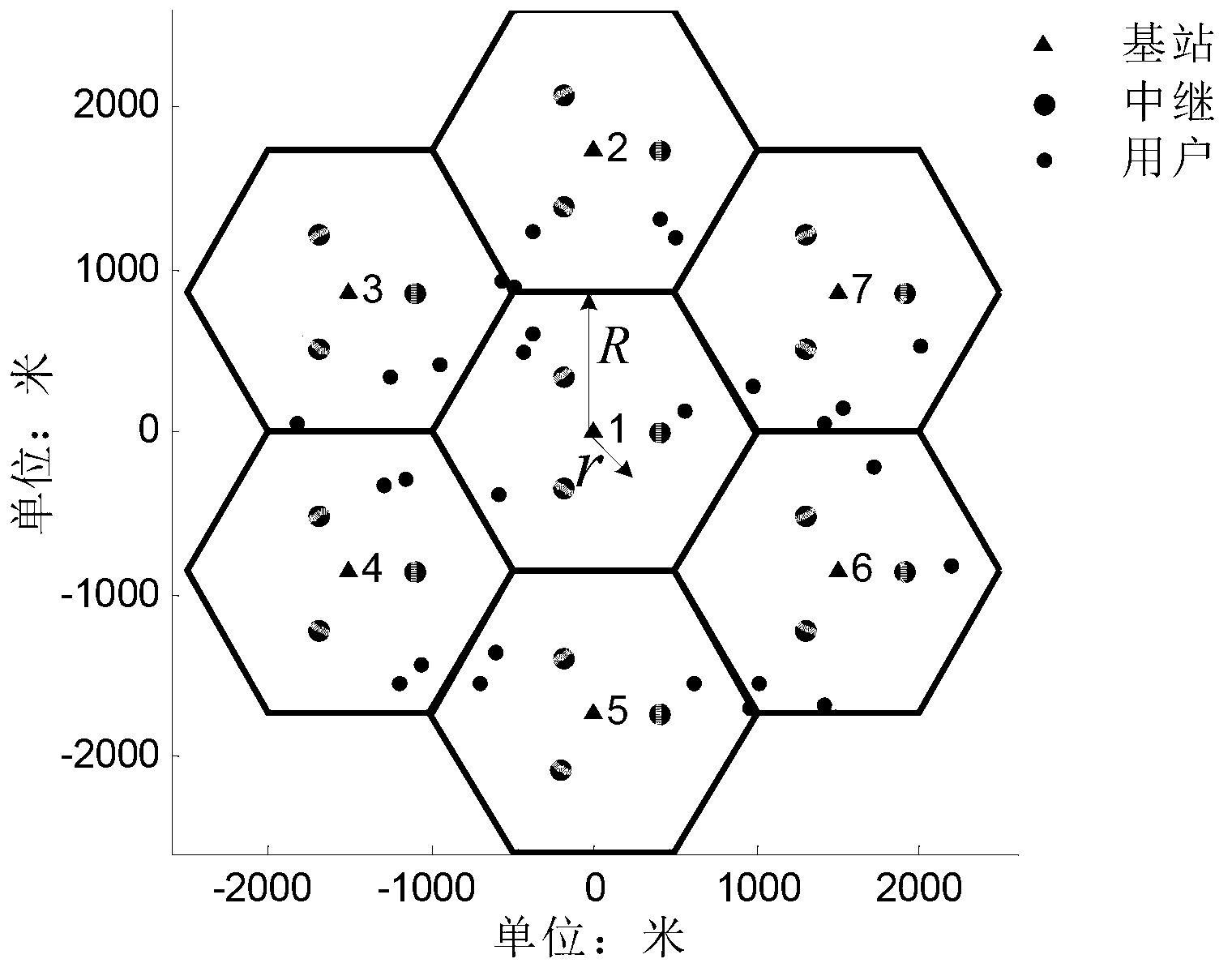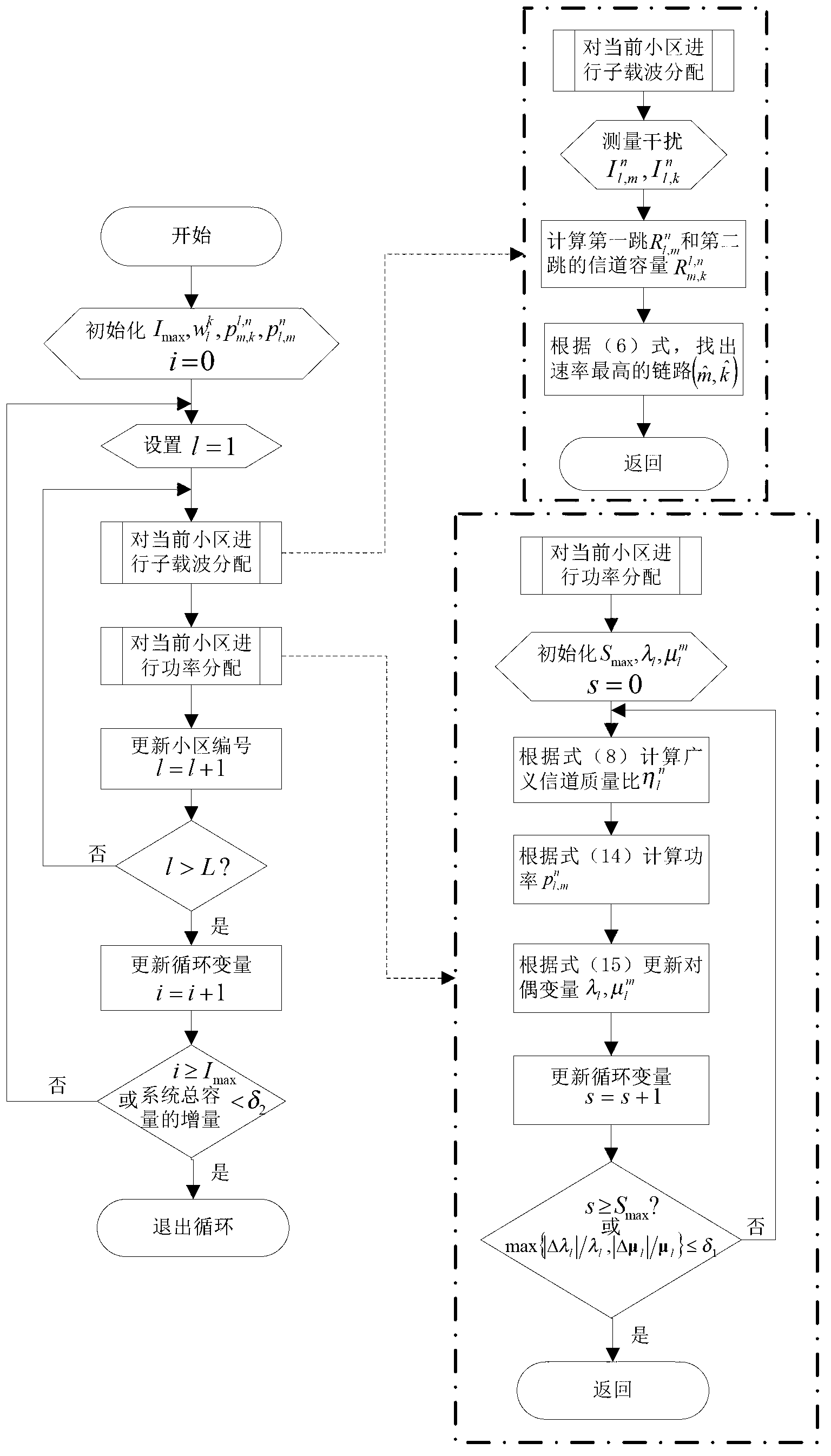Distributed resource allocating method in multi-cell relay OFDMA system
A distributed resource and allocation method technology, applied in the field of physical layer resource allocation, can solve the problems of complex iterative process of dual decomposition and ellipsoid method, increased signaling interaction between cells, large signaling and computing overhead, etc., to achieve high utilization value, low time complexity, and the effect of reducing signaling overhead
- Summary
- Abstract
- Description
- Claims
- Application Information
AI Technical Summary
Problems solved by technology
Method used
Image
Examples
Embodiment Construction
[0052] The specific implementation will be further described below in conjunction with the accompanying drawings.
[0053] The present invention is a low-complexity distributed resource allocation scheme carried out under the relay-based multi-cell OFDMA system, and the optimization model is firstly given below.
[0054] 1. Establish a mathematical model
[0055] In order to avoid interference in the cell, it is assumed that any subcarrier in the cell is only allowed to be occupied by one relay or user at the same time. Note that the power allocated by the base station of the lth cell to the relay m on the subcarrier n is Then the capacity of the first hop of the downlink can be written as:
[0056] R l , m n = log 2 ( 1 + p l ...
PUM
 Login to View More
Login to View More Abstract
Description
Claims
Application Information
 Login to View More
Login to View More - Generate Ideas
- Intellectual Property
- Life Sciences
- Materials
- Tech Scout
- Unparalleled Data Quality
- Higher Quality Content
- 60% Fewer Hallucinations
Browse by: Latest US Patents, China's latest patents, Technical Efficacy Thesaurus, Application Domain, Technology Topic, Popular Technical Reports.
© 2025 PatSnap. All rights reserved.Legal|Privacy policy|Modern Slavery Act Transparency Statement|Sitemap|About US| Contact US: help@patsnap.com



